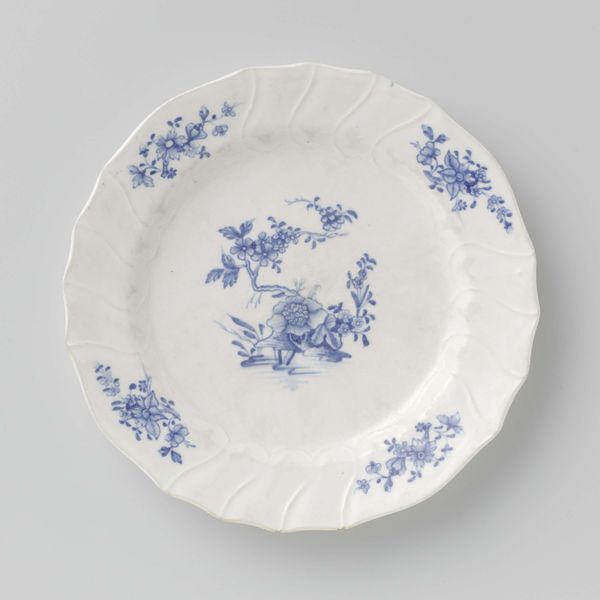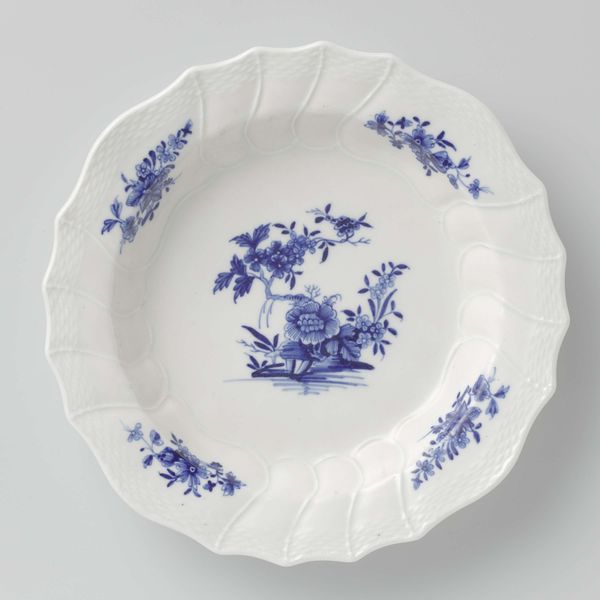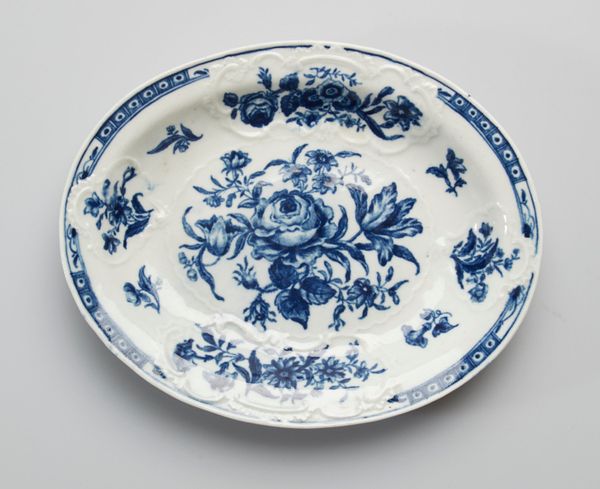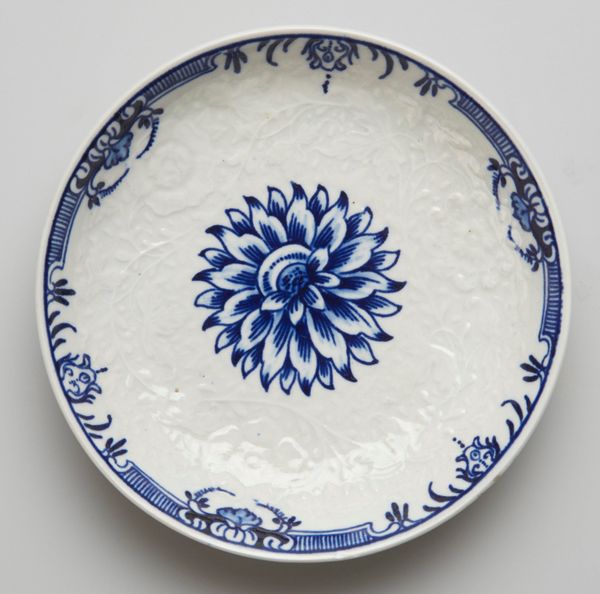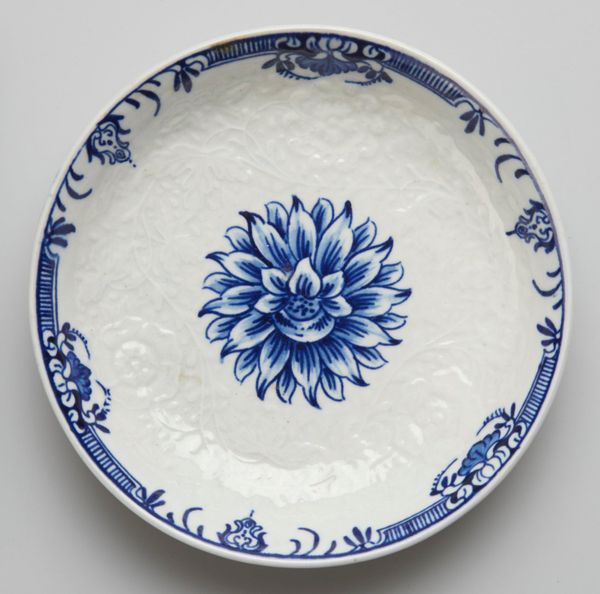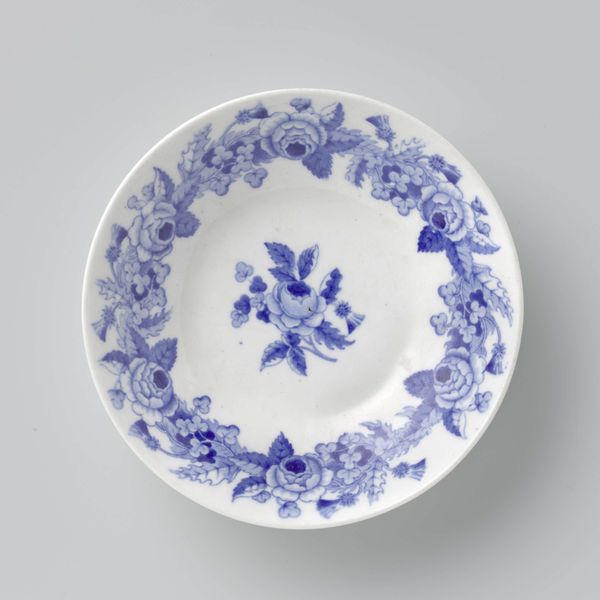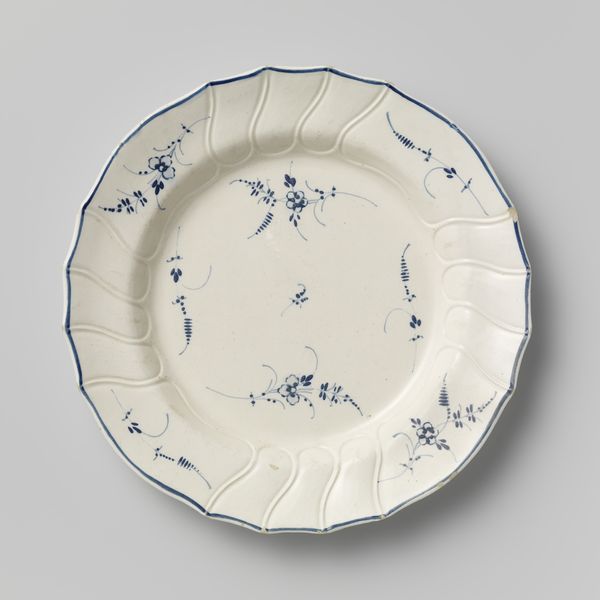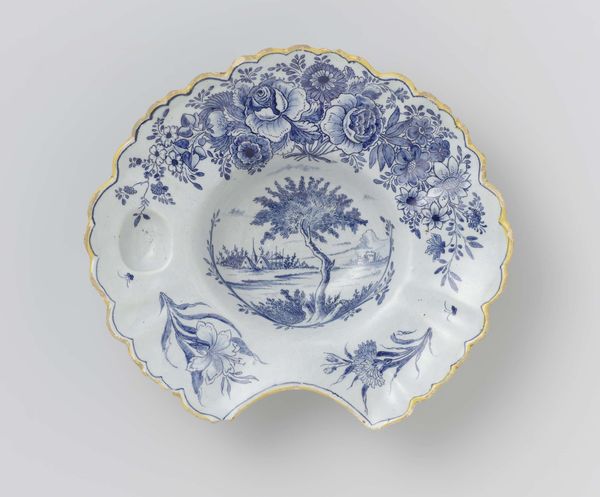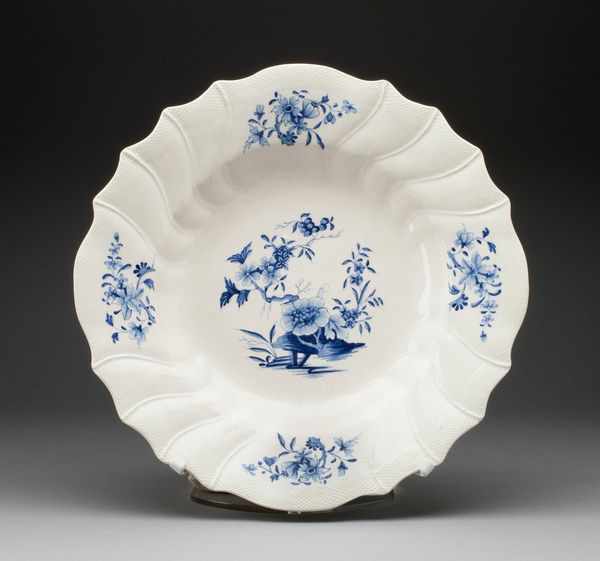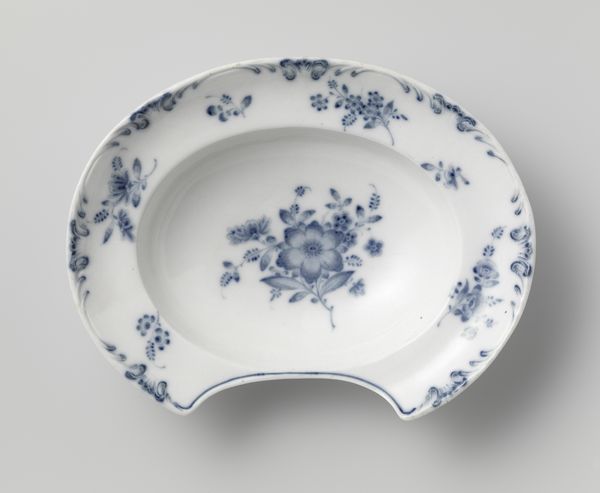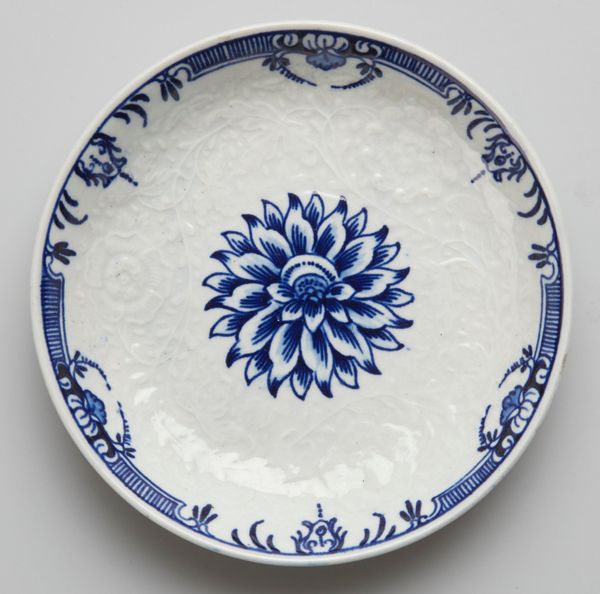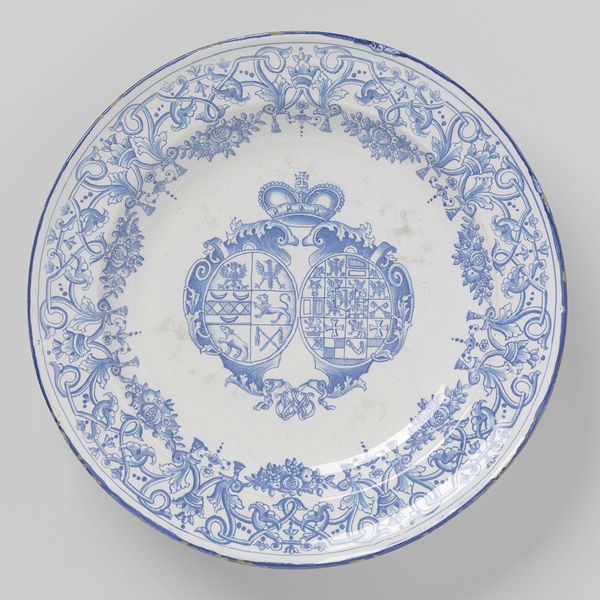
drawing, print, ceramic
#
drawing
# print
#
ceramic
#
stoneware
#
ceramic
#
decorative-art
Dimensions: height 2.9 cm, diameter 24 cm, diameter 14 cm
Copyright: Rijks Museum: Open Domain
Editor: So, this is a plate from around 1800, called 'Plate with a bouquets and flowers.' It's ceramic, and I'm struck by the simplicity of the blue floral design against the white background. How do you read this work? Curator: This plate, while seemingly a simple piece of decorative art, speaks volumes about the society it was created in. Think about who had access to these kinds of goods. It reflects emerging consumerism. Floral motifs, like those adorning the plate, were frequently used to communicate coded messages relating to love, virtue, and social standing, so it prompts considering what messages are being subtly transmitted. How might the plate's aesthetic be tied to colonial power structures? Editor: Colonialism? I wouldn't have made that connection immediately. Is it because of the materials or maybe where the ceramic production happened? Curator: Both! The plate's porcelain was likely mimicking fine Chinese exports or referencing other cultural centres via its ornamentation; during that period, these decorations reflected access to, and an appropriation of, global resources and aesthetics through trade and often exploitation. This connects directly to social class and economic power. Can you imagine how a piece like this could function in the theatre of domesticity during that time? Editor: That makes a lot of sense. It's not just a plate, it's a statement. I guess I hadn't considered how something so domestic could be so loaded. Curator: Exactly. What seems merely decorative becomes an object interwoven with complex narratives about power, taste, and global exchange. Now, thinking about contemporary art practices, what do you think of repurposing imageries of colonial-era tableware and ceramics today? Editor: I see them as critiques of those power dynamics. They invite us to think about what's changed and what hasn't, and to question the legacy we've inherited. Thanks! Curator: Thanks, It's exciting to view these things as time capsules of culture!
Comments
No comments
Be the first to comment and join the conversation on the ultimate creative platform.
